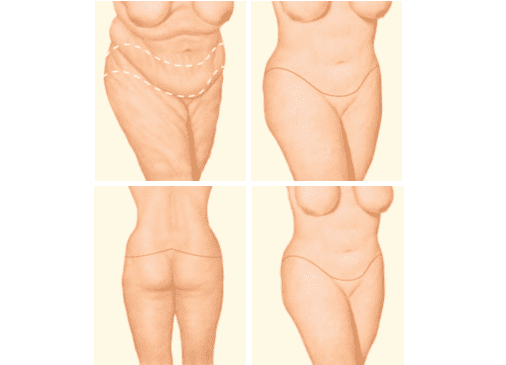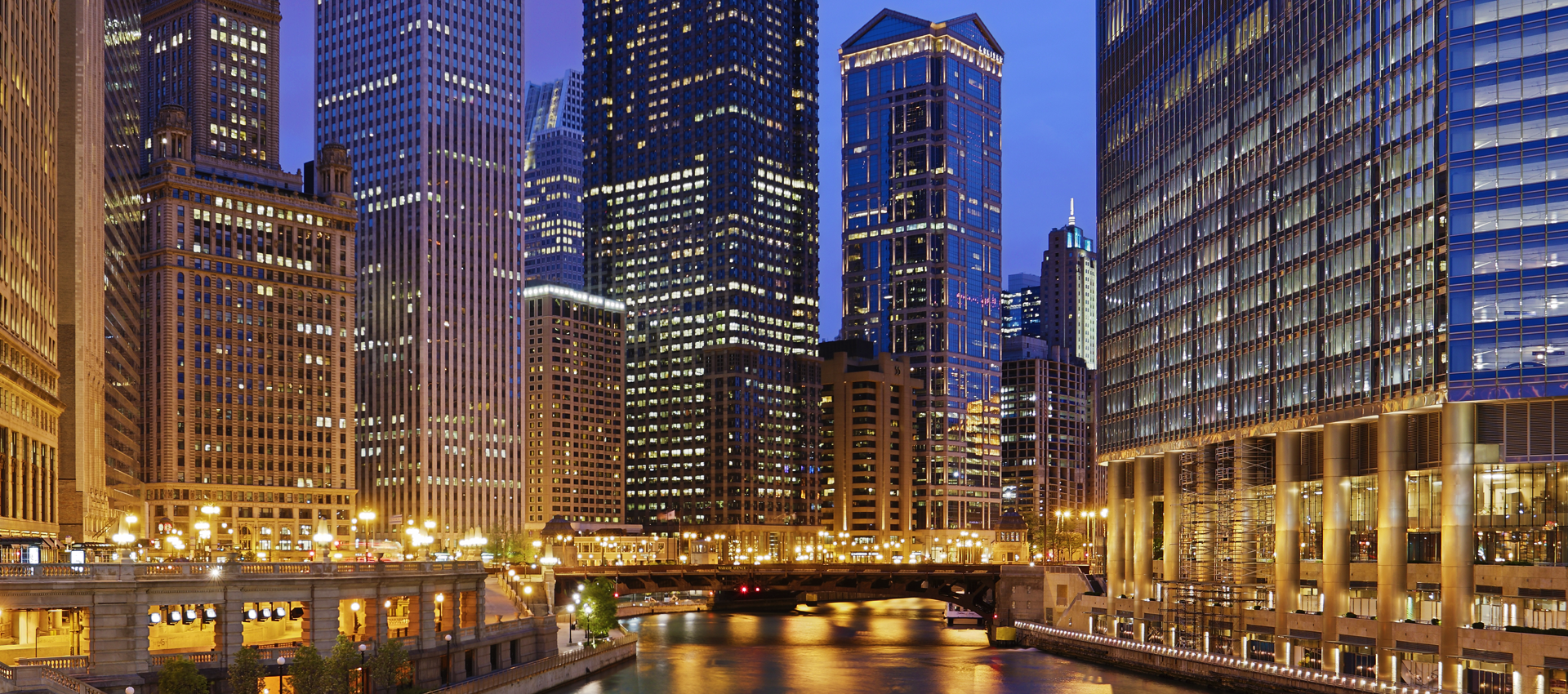Body Lift Chicago

What is a Body Lift?
A body lift improves the shape of the abdomen, buttocks, and back. Through a long scar in the underwear line, excess skin and fat are removed to improve your contours.
Enhancing your appearance
A well-toned body with smooth contours often is a sign of youth and fitness. Unfortunately, diet and exercise alone cannot always achieve desired results for people who have loose skin that bulges through clothes. Age, pregnancy, changes in weight, and even genes may contribute to sagging of the abdomen, buttocks, and back.
If you desire a firmer, more youthful-looking body contour, then a surgical body lift may help achieve your goals.
A body lift may include these areas:
- Abdominal area, locally or extending around the sides and into the lower back area
- Buttocks, that may be low, flat or shaped unevenly
- Groin that may sag into the inner thigh
- Thigh, including the inner, outer, or posterior thigh
What it won’t do:
Body lifts can dramatically change the appearance of the trunk, but it can only do so with a long scar in the underwear line. The fat and extra skin is traded for a scar. Liposuction alone can remove excess fat through tiny scars when the skin has good elasticity and can shrink. However, the changes with a body lift are far greater than that achievable with liposuction.
Preparing for Surgery
Prior to surgery, you may be asked to:
- Get lab testing or a medical evaluation
- Take certain medications or adjust your current medications
- Stop smoking well in advance of surgery
- Avoid taking aspirin, anti-inflammatory drugs and herbal supplements for one full week as they can increase bleeding
Special instructions you receive will cover:
- What to do on the day of surgery
- The use of anesthesia during your body contouring surgery
- Post-operative care and follow-up
Your plastic surgeon will also discuss where your procedure will be performed. Body lift surgery may be performed in an accredited office-based surgical center, outpatient or ambulatory surgical center, or a hospital.

Procedural Steps
What happens during body lift surgery?
Step 1 – Anesthesia
Medications are administered for your comfort during the surgical procedures. Body lifts generally require full general anesthesia.
Step 2 – The incision
Incision length and pattern depend on the amount and location of excess skin to be removed, as well as personal preference and surgical judgment. The scar on the front of the abdomen is just like an abdominoplasty scar, and is just above the pubic hair. The goal of surgery is to keep the scar in the underwear line. The scar continues onto the buttocks. Depending on where the extra skin and fat are located, the scar can either rest on the buttocks, or remain higher and in the small of the back. Deep sutures and liposuction are often used to bring the tissues together with an improved contour.
Step 3 – Closing the incisions
Sutures, skin adhesives or tapes close the skin incisions.
Step 4 – See the results
The results of a body lift are visible almost immediately. Swelling that occurs after surgery can remain for several months, and the scars change in color for ever 12 months.
Important facts about the safety and risks of body lift surgery
A body lift is a larger surgery and typically requires more postoperative recovery than does an abdominoplasty. Depending on your physique, you may or may not be an ideal candidate for this procedure.
Your plastic surgeon and/or staff will explain in detail the risks associated with surgery. You will be asked to sign consent forms to ensure that you fully understand the procedure you will undergo and any risks or potential complications.
Possible risks of body lift surgery include:
- Unfavorable scarring
- Bleeding (hematoma)
- Infection
- Fluid accumulation or seroma under the skin.
- Poor wound healing
- Skin loss
- Blood clots
- Numbness or other changes in skin sensation
- Anesthesia risks
- Skin discoloration and/or prolonged swelling
- Fatty tissue found deep in the skin might die (fat necrosis)
- Major wound separation
- Asymmetry
- Recurrent looseness of skin
- Pain, which may persist
- Deep vein thrombosis, cardiac and pulmonary complications
- Persistent swelling in the legs
- Possibility of revisional surgery
- Sutures may spontaneously surface through the skin, become visible or produce irritation that require removal
Is it right for me?
Before you decide to undergo body lift surgery, your weight must be relatively stable. Women considering future pregnancies should postpone an abdominal body lift since pregnancy may diminish the results.
Good candidates for body lift surgery are:
Individuals with significant soft tissue looseness in one or multiple body areas
- Healthy individuals who do not have medical conditions that can impair healing or increase risk of surgery
- Non-smokers
- Individuals with a positive outlook and realistic goals for what body lift surgery can accomplish
- Individuals committed to leading a healthy lifestyle including proper nutrition and fitness
Be sure to ask questions:
It’s very important to ask your plastic surgeon questions about your body lift procedure. It’s natural to feel some anxiety, whether it’s excitement for your anticipated new look or a bit of preoperative stress.
Recovery
After your body lift procedure is completed, dressings or bandages will be applied to the incisions. Small thin tubes typically are placed under the skin to drain any excess blood or fluid that may collect.
You will be given specific instructions that may include: How to care for your surgical site(s) following surgery, medications to apply or take orally to aid healing and reduce the risk of infection, specific concerns to look for at the surgical site or in your general health, and when to follow up with your plastic surgeon.
Be sure to ask your plastic surgeon specific questions about what you can expect during your individual recovery period.
- Where will I be taken after my surgery is complete?
- What medication will I be given or prescribed after surgery?
- Will I have dressings/bandages after surgery?
- When will they be removed?
- Are stitches removed? When?
- When can I resume normal activity and exercise?
- When do I return for follow-up care?
When you go home
If you experience shortness of breath, chest pains, or unusual heart beats, seek medical attention immediately. Should any of these complications occur, you may require hospitalization and additional treatment.
The practice of medicine and surgery is not an exact science. Although good results are expected, there is no guarantee. In some situations, it may not be possible to achieve optimal results with a single surgical procedure and another surgery may be necessary.
Following your physician’s instructions is key to the success of your surgery. It is important that the surgical incisions are not subjected to excessive force, abrasion, or motion during the time of healing. Your doctor will give you specific instructions on how to care for yourself.
The results will be long-lasting
The results of a body lift are visible almost immediately. Swelling is mostly resolved in 4-6 weeks, though some element of swelling may remain for several months. Scars will fade over the first 9-12 months. The scars will remain and are permanent. However, the overall results are long-lasting, provided that you maintain a stable weight and general fitness.
As your body ages, it is natural to lose some firmness. However, most of your initial improvement should be relatively permanent.
Words to know
Abdominoplasty: A surgical procedure to correct the apron of excess skin hanging over your abdomen.
General anesthesia: Drugs and/or gases used during an operation to relieve pain and alter consciousness.
Hematoma: Blood pooling beneath the skin.
Intravenous sedation: Sedatives administered by injection into a vein to help you relax.
Liposuction: Also called lipoplasty or suction lipectomy, this procedure vacuums out fat from beneath the skin’s surface to reduce fullness.
Local anesthesia: A drug injected directly to the site of an incision during an operation to relieve pain.
Lower body lift: Surgical procedure to correct sagging of the abdomen, buttocks, groin and outer thighs.
Medial thigh lift: A surgical procedure to correct sagging of the inner thigh.
Sutures: Stitches used by surgeons to hold skin and tissue together.
Tummy tuck: A surgical procedure to correct the apron of excess skin hanging over your abdomen.
Schedule a Body Lift Consultation
To learn more about body lift surgery, please contact the team at Northwestern Plastic Surgery to schedule a personal consultation. Call us today or send us an email.




